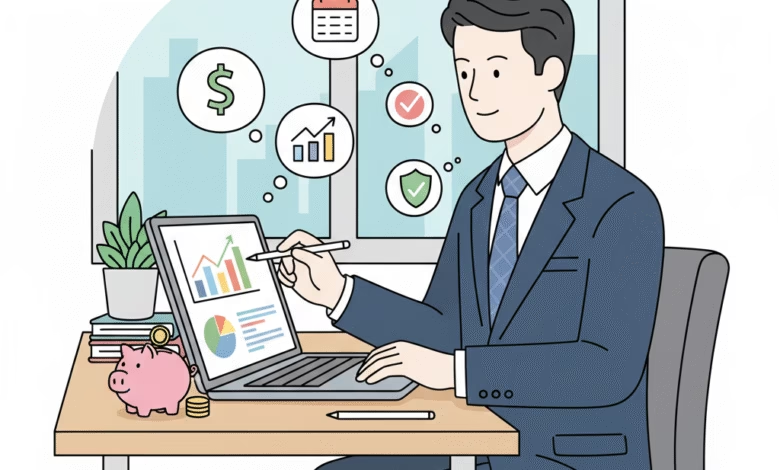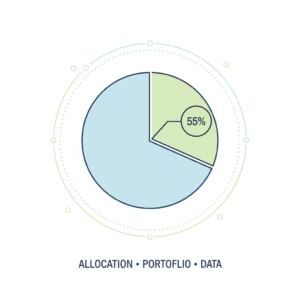How Brokers Influence Stock Prices (and What to Watch Out For)
Understand how brokers and funds can impact stock prices in the market

When most retail investors think of a stockbroker, they picture a neutral intermediary—a platform or person who simply executes a trade. You click “buy” on your app, and the broker makes it happen, taking a small commission (or perhaps no commission at all).
This perception, however, is dangerously simplistic.
Brokers and the larger brokerage firms they work for are not passive observers; they are powerful, active participants in the financial ecosystem. They stand at the crossroads of information, capital, and technology. Their actions, recommendations, and even their internal business models can—and do—create significant ripples, influencing stock prices in ways that are both shockingly direct and incredibly subtle.
Understanding how they exert this influence is not just academic; it’s essential for protecting your portfolio. This article pulls back the curtain on the mechanisms brokers use, from the glaringly obvious to the hidden plumbing of the market, and shows you exactly what to look out for.
The Visible Hand: How Broker Analyst Ratings Shape Market Sentiment

The most direct way brokers influence prices is through their research departments. You’ve seen the headlines: “Morgan Stanley Upgrades Tesla to ‘Overweight'” or “Goldman Sachs Downgrades Apple to ‘Sell’.”
These analyst ratings are far more than mere opinions; they are powerful market-moving events.
- The “Buy, Hold, Sell” Signal: When a prominent analyst from a major brokerage (the “sell-side”) issues a rating, thousands of institutional and retail investors listen. An upgrade can trigger a wave of buying, driving the price up. A downgrade, especially a rare “sell” rating, can ignite panic selling.
- The Price Target: Alongside the rating, analysts provide a “price target” (e.g., “We believe Stock XYZ will reach $150 in 12 months”). This target acts as an anchor, influencing how investors value the stock. If the current price is $100, a $150 target suggests significant upside, encouraging buys.
- The Herd Mentality: Humans are wired for social proof. When a respected institution gives a stock its stamp of approval, it provides psychological comfort to retail investors, who then “herd” into the trade. This collective action, sparked by the broker’s report, becomes a self-fulfilling prophecy, pushing the price toward the analyst’s target.
But why should you be cautious? Because these ratings are not always as objective as they appear.
Unpacking Broker Conflicts of Interest: Are They Serving You or Themselves?
This is where the picture gets murky. A brokerage firm is not just a research shop; it’s often a massive financial conglomerate with many competing interests. The most significant conflict arises from investment banking.
The investment banking division of a firm (like J.P. Morgan or Morgan Stanley) makes enormous fees by:
- Taking companies public (IPOs).
- Helping companies raise debt (bond offerings).
- Advising on mergers and acquisitions (M&A).
Now, imagine you’re an analyst at that firm. The investment banking side is trying to win a lucrative IPO deal from Company XYZ. Do you think you’ll feel pressure to avoid issuing a “Sell” rating on Company XYZ, even if your research justifies it? Absolutely.
This creates a powerful incentive to maintain positive ratings on current or potential investment banking clients. The so-called “Chinese Wall”—a metaphorical barrier meant to separate research from investment banking—is notoriously porous.
What to watch for: Be deeply skeptical of uniformly positive ratings, especially for companies that have recently gone public or are frequently raising capital. Look for analysts who have a proven track record of making tough “sell” calls, even on popular stocks. Always ask: Who benefits from this rating?
The “Hidden Plumbing” of the Market: Payment for Order Flow (PFOF) Explained
In the last decade, “zero-commission” trading has become the norm, led by platforms like Robinhood. But if you’re not paying for the product, you are the product.
This business model is largely powered by a controversial practice called Payment for Order Flow (PFOF).
Here’s how it works, simplified:
- You place an order to buy 10 shares of Apple on your “free” brokerage app.
- Your broker doesn’t send that order directly to a public exchange like the NYSE or NASDAQ.
- Instead, they sell your order to a massive wholesale market maker or high-frequency trading (HFT) firm, such as Citadel Securities or Virtu Financial.
- This HFT firm pays your broker a tiny fraction of a cent for the right to execute your trade.
Why do they pay for it? Because your order is valuable information. By seeing millions of retail orders just milliseconds before they are executed, these market makers can position themselves to profit from the bid-ask spread (the tiny difference between the highest price a buyer will pay and the lowest price a seller will accept).
How this influences price:
- Price Improvement (or Lack Thereof): Your broker has a legal duty to get you the “best execution.” PFOF advocates claim this system allows market makers to give you a slightly better price than you’d get on a public exchange. Critics argue this “price improvement” is often minimal and that the system disincentivizes brokers from finding a truly better price elsewhere.
- Market Fragmentation: PFOF routes massive volumes of retail trades away from public exchanges. This means the prices you see on the public ticker may not reflect the full picture of supply and demand, as a huge chunk of the trading is happening “off-exchange.”
This practice means your broker’s primary customer isn’t you; it’s the HFT firm paying them for your orders. That’s a fundamental conflict of interest.
How High-Frequency Trading (HFT) and Broker Infrastructure Tilt the Field

The PFOF model is just one part of a larger story: speed. The biggest brokers and market-making firms don’t just participate in the market; they operate on a different plane of reality, measured in microseconds (millionths of a second).
They spend hundreds of millions of dollars on co-location (placing their servers in the same data center as the stock exchange) and fiber-optic cables to gain a speed advantage.
This speed isn’t just for executing trades faster. It’s for reacting faster.
- Latency Arbitrage: An HFT firm can see a buy order for a stock on one exchange and, in the time it takes for that order to travel to another exchange (milliseconds), buy up the stock on the second exchange and sell it back to the original buyer at a slightly higher price.
- Order Detection: These algorithms are designed to detect large institutional orders. If an algorithm senses a large “buy” order being slowly executed, it can race ahead, buy the stock, and drive the price up before the institution has finished buying.
Large brokers either have their own HFT desks (known as proprietary trading) or are closely allied with HFT firms. This “arms race” for speed creates a two-tiered market: one for the ultra-fast and one for everyone else. This high-speed activity, while not directly from your retail broker, is part of the market structure that your broker chooses to interact with, and it absolutely influences the moment-to-moment price of stocks.
Dark Pools: Why Billions in Trades Happen Away from Public View
When you think of the stock market, you picture the “lit” exchanges like the NYSE. But a staggering amount of trading volume—sometimes over 40%—happens in “dark pools.”
Dark pools are private, off-exchange trading platforms, mostly run by the largest brokerage firms (like Goldman Sachs, Morgan Stanley, and UBS).
Why do they exist? They were created for institutional investors (like mutual funds or pension funds) to execute massive “block trades” without scaring the market. If a pension fund wants to sell 5 million shares of Microsoft, dumping it on the public market all at once would crash the price. In a dark pool, they can find a single large buyer anonymously, and the trade is executed “in the dark.”
How this influences price:
- Lack of Price Discovery: “Price discovery” is the process of the market finding a fair value for a stock through the public interaction of buyers and sellers. When so much volume happens in the dark, the public price you see may be “stale” or misleading. It doesn’t reflect the true, full extent of supply and demand.
- Information Leakage: While anonymous, these dark pools are not perfectly secret. Information often “leaks.” HFT firms use sophisticated techniques to “ping” dark pools, sending in small orders to sniff out large, hidden orders. Once a large sell order is detected, they can short the stock on the public market, driving the price down before the block trade is even reported (which can be delayed).
Your broker, especially if it’s one of the big banks, operates these very pools, giving them and their biggest clients a view of the market that retail investors will simply never have.
The Ripple Effect of Institutional “Block Trades” and Information Leakage
This ties directly into the previous point. Brokers act as the gatekeepers for institutional “block trades.” When a hedge fund decides to liquidate a $500 million position, their first call is to their prime broker.
The broker’s job is to “work the order”—to sell those shares with minimal market impact. But the very knowledge that a massive seller is in the market is, itself, the most valuable information in the world.
- “Whisper Numbers”: Before an analyst publicly downgrades a stock, do they sometimes give their top institutional clients a heads-up? This is illegal (Regulation Fair Disclosure, or Reg FD), but the temptation is immense. A subtle hint can be enough for a hedge fund to get out of a position before the downgrade hits the public and the price collapses.
- Proprietary Trading: If the broker’s own trading desk (“prop desk”) gets wind that a huge client is selling, they may be tempted to trade on that information (also illegal, known as front-running).
Even when acting legally, the broker is at the center of this information flow. They know who is buying and who is selling, and in what size. This aggregate knowledge gives them an unparalleled “feel” for the market, which inevitably informs the advice and ratings they give to their other clients.
When the House Calls: Margin, Leverage, and Forced Liquidation

Finally, brokers have a direct, brutal, and entirely legal way to influence stock prices: the margin call.
When you trade “on margin,” you are borrowing money from your broker to buy stocks. This leverage magnifies your potential gains, but it also magnifies your potential losses.
Your broker requires you to maintain a certain level of equity (your own money) in your account, known as the “maintenance margin.” If the value of your stocks falls too far, you’ll breach this level.
The broker will then issue a “margin call,” demanding you deposit more cash immediately. If you can’t or don’t, the broker has the right to force-liquidate your positions. They will sell your stocks at the current market price to cover your loan.
How this influences price:
This isn’t just an issue for one investor. When a popular, crowded stock (think “meme stocks”) starts to fall, it can trigger a cascade of margin calls across thousands of retail accounts simultaneously.
- Brokers all begin force-selling at the same time.
- This sudden, massive flood of “sell” orders overwhelms demand.
- The price collapses, which triggers more margin calls for other investors.
- This “forced liquidation spiral” can utterly destroy a stock’s value in hours.
A famous institutional example is the collapse of Archegos Capital Management in 2021. When its leveraged bets went bad, its prime brokers (including Credit Suisse and Morgan Stanley) force-liquidated tens of billions of dollars in stocks (like ViacomCBS and Discovery), causing those specific stocks to crash by over 50% in two days.
In this scenario, the broker isn’t just an intermediary; it’s the “house” calling in its debts, acting as a massive, price-crushing seller.
Your Defense Strategy: A Practical Guide to Auditing Your Broker
Knowing all this, you are no longer a naive investor. You can now take concrete steps to protect yourself.
- Read Your Broker’s SEC Rule 606 Reports. This is the most important step. Every broker is required by the SEC to publicly disclose, every quarter, where they route your orders and what (if any) PFOF payments they receive. This is usually in the “Legal” or “Disclosures” section of their website. If 90% of your stock orders are going to a single HFT firm, you know what their business model is.
- Investigate Their Conflicts of Interest. Read their “Client Relationship Summary” (Form CRS). This document legally requires them to state, in plain English, how they make money, what conflicts they have, and whether they have a fiduciary duty to you (meaning they must act in your best interest). Many brokers do not have a fiduciary duty; they only have a “suitability” standard (meaning they can sell you a product that is “suitable,” even if it’s not the best or cheapest one for you).
- Diversify Your Information Sources. Never, ever make a trade based on a single analyst rating. Use platforms that aggregate ratings (like TipRanks or Yahoo Finance) to see the consensus. More importantly, learn to do your own fundamental research. Read the company’s 10-K (annual report) and listen to its earnings calls.
- Understand “Free” Isn’t Free. If you are using a zero-commission broker, assume you are paying for it through PFOF and potentially worse trade execution. For long-term investors, this may not matter much. For active traders, those fractions of a penny add up.
- Avoid or Strictly Limit Margin. The easiest way to avoid the broker’s ultimate power over you is to not be in their debt. Use cash accounts. If you must use margin, keep your leverage extremely low so that a normal market correction doesn’t trigger a catastrophic margin call.
Be an Investor, Not a Pawn

Brokers are not your partners. They are service providers, and in many cases, they are market-makers with their own “skin in the game.” They influence stock prices through their public ratings, their private conflicts of interest, their high-speed trading infrastructure, their opaque dark pools, and their power to force-liquidate.
This doesn’t mean the market is “rigged” or that you can’t succeed. It simply means the game is far more complex than it appears.
Your best defense is to stop playing their game of short-term noise, ratings, and micro-second trading. Instead, play the long game. Focus on the underlying fundamentals of the businesses you invest in, buy and hold quality assets for years, and treat broker recommendations with the healthy dose of skepticism they deserve.





